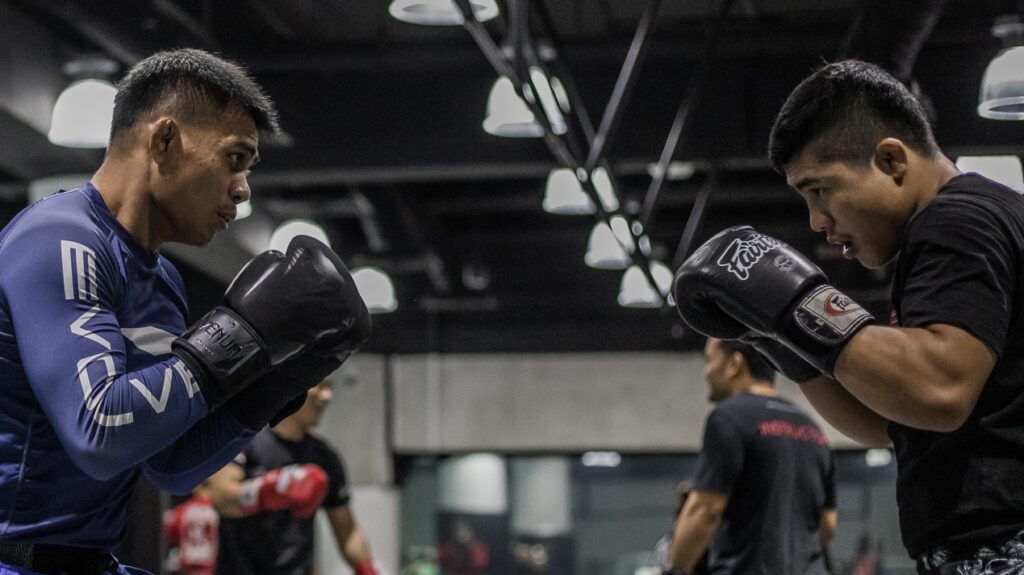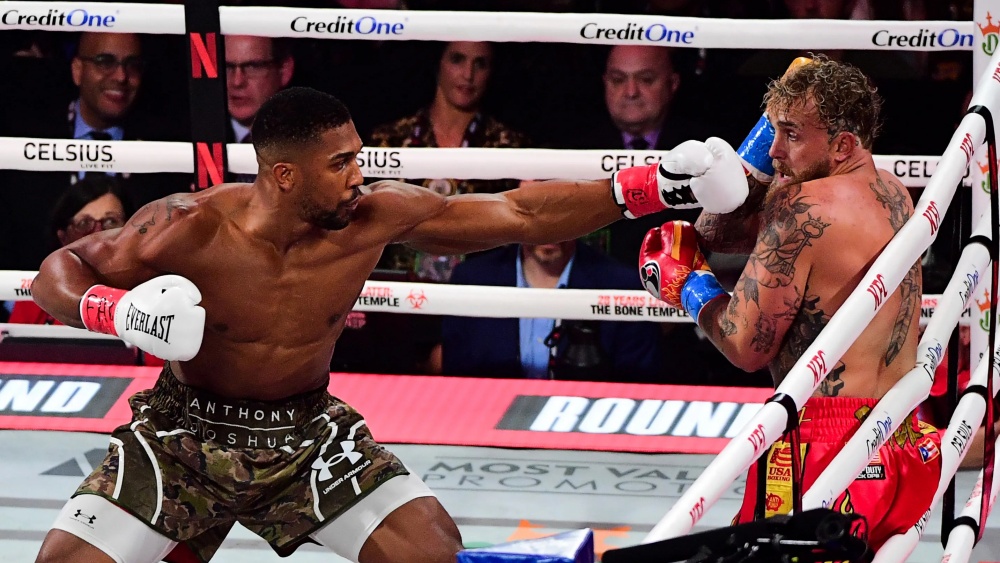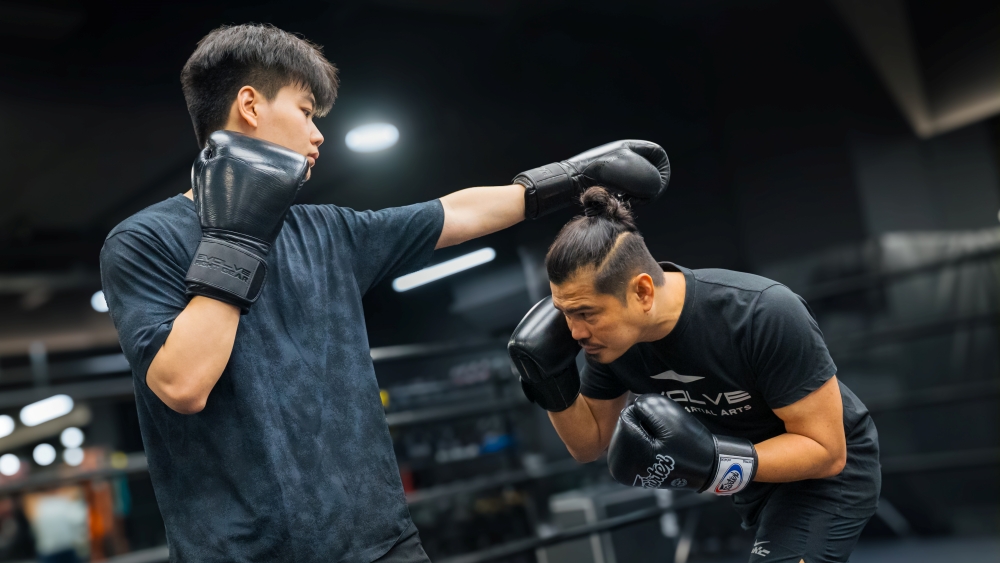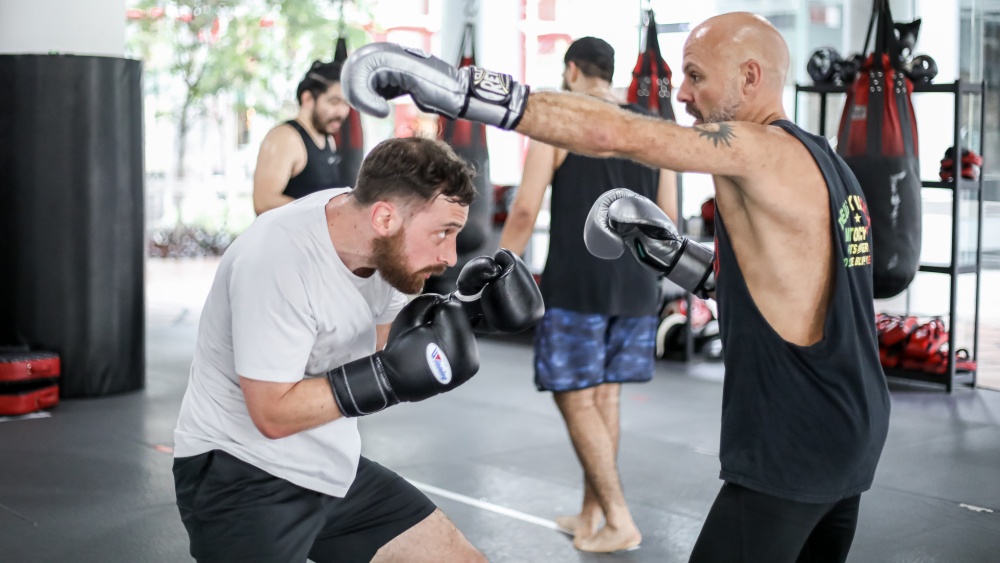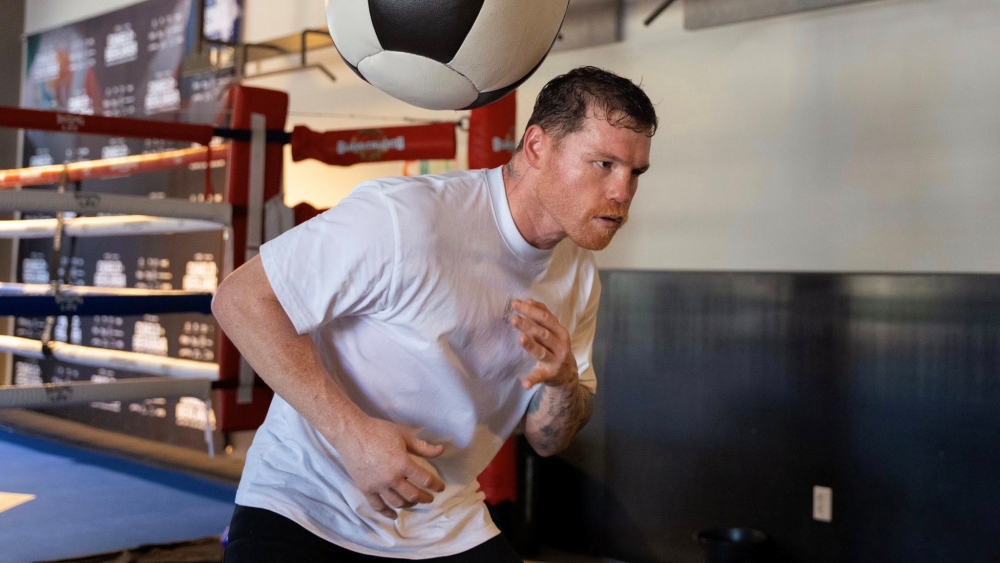One of the most important aspects of training in boxing is sparring. Sparring is the closest thing to a real fight, without actually fighting. It will help you gain a better grasp of the correct use of the skill and techniques you’ve drilled in the gym and how to utilize them in terms of distance and reach, timing and rhythm, and in different degrees of power.
The core essence of sparring is to make you and your partner accustomed to the ebb and flow of a real fight. It’s designed to mimic specific circumstances and situations you will face either in the ring or in real life, so that you know exactly what to do when the time comes to put your skills to use.
As a beginner in boxing, sparring can be a little daunting. It’s something you’ve never experienced before, and there’s nothing quite like it. Naturally, you will feel a bit apprehensive at the thought of stepping into the ring and trying out what you’ve learned against a live body.
But there comes a point in your training when you reach a certain level. Your skills become sound, your technique, fluid. The more you hone your craft, the closer you get to when it’s time to climb into the ring and spar.
Of course, to the unprepared and the uneducated, sparring can come off as an overwhelming concept to some degree. But if you’re here reading this, then you’re at least curious.
If you’re considering sparring for the first time, we’ve come up with a few thoughts to ponder to help you decide whether or not you’re ready. This short but sweet guide will get you ready for when you have to climb into the ring and throw your first punch.
Today, Evolve Daily shares ten things you need to know about boxing sparring.
1) At What Point Should You Start Sparring?
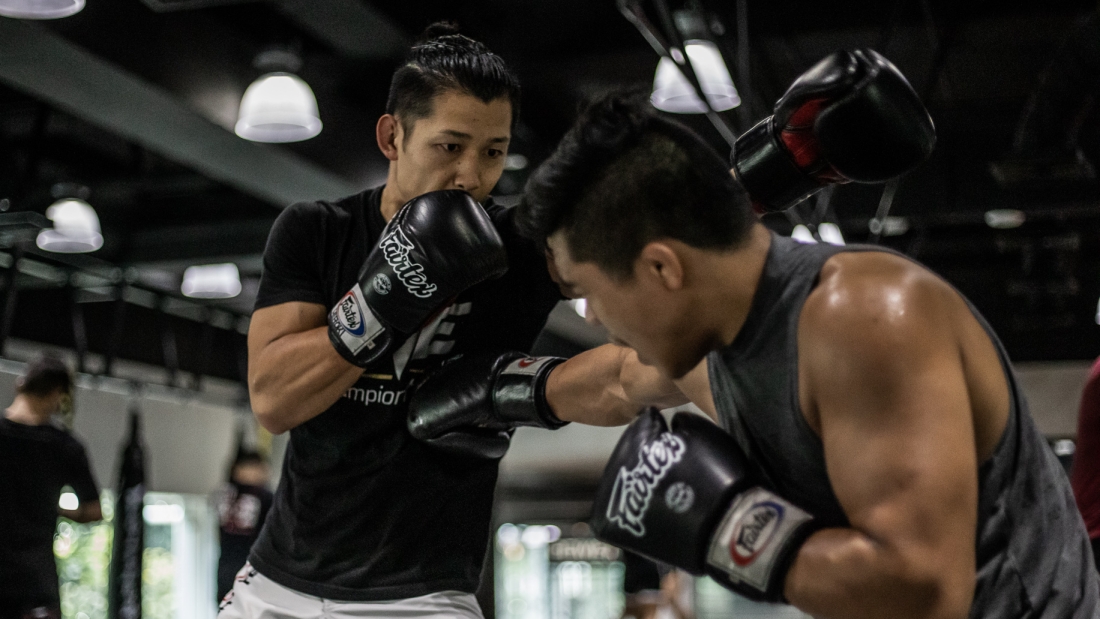
A lot of people who have trained in boxing for a few months have often wondered when they should start sparring. It’s one of the most commonly asked questions. The answer to this question varies from person to person, but generally, sparring should be introduced after about 3-4 solid months of consistent training.
Ideally, you will want to have the fundamentals incorporated into your daily training routine, at the very least. Things like basic offense and combinations, defensive techniques like slipping, parrying and countering, as well as basic tactical strategies. The last thing you want to do is to rush into sparring, so make sure you’re at a level where you’re confident enough in your abilities, at least in principle.
One good way to know if you’re ready to spar is by asking your instructor. Your instructors can see the progress you’ve made in training, and they can properly determine whether or not you are at a level sufficient enough to test your skills in the ring against a live body.
If your instructor feels you’re ready, then you are.
2) Come Prepared
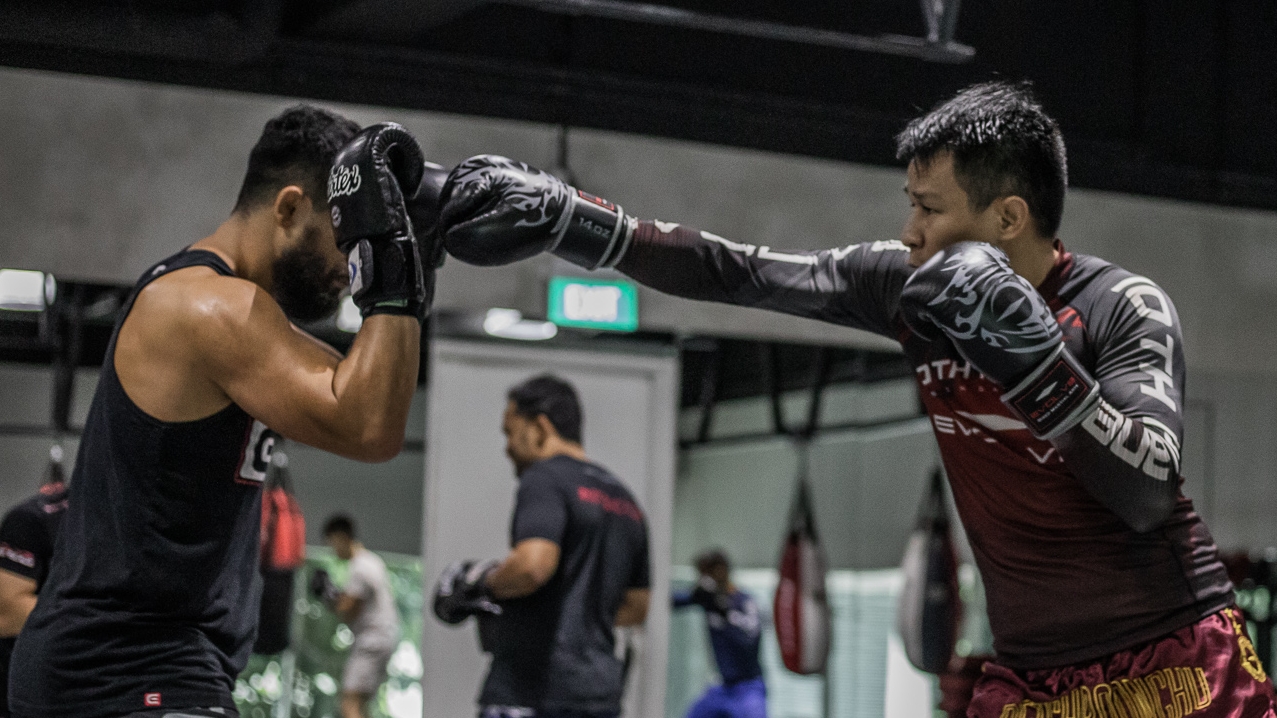
As it should be with everything, always come prepared both mentally and physically before every sparring session. This means you should have had ample rest the night before. Getting enough sleep is crucial to your sharpness, which in turn has a direct effect on your performance.
You also want your mind to be clear of distractions. Mental preparation is key to having a good sparring session. You don’t want to step into the ring with other matters clouding your mind.
In addition, you have to remember to gear up. Make sure you’ve come prepared with the apt equipment for sparring. This is for your safety. You will need to have the right type of gloves — usually 14 ounce gloves for sparring — a mouthguard, and headgear.
It’s highly recommended to have all of these pieces of equipment for sparring sessions. Don’t go in there trying to be a hero.
3) Choose Your Sparring Partners Carefully
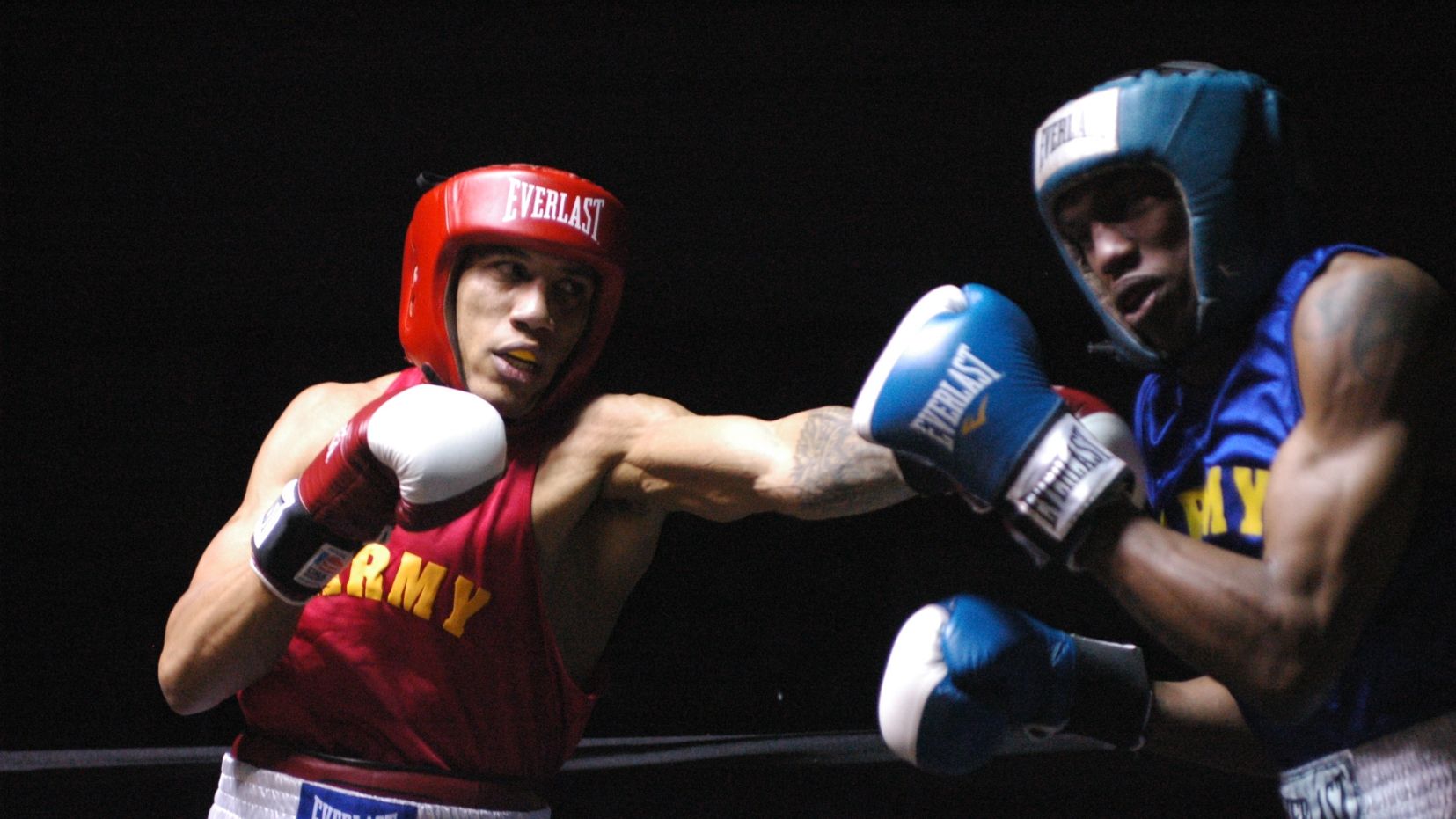
Once you’ve made the decision to enter sparring, you’re going to want to choose your sparring partners carefully. When you’re just starting out, it’s good to spar with your instructors first, as they are the most qualified to guide you through sparring basics.
But when you’re ready to choose your own sparring partners, it’s important to make informed decisions. Not every sparring partner is the same.
Obviously, you will want to avoid partnering up with someone way ahead of your current skill level. This will be counterintuitive to your learning. You should either choose someone on the same level, or just slightly ahead of you.
Sparring should also be a mere tool for you to test your techniques in real fight situations, especially for beginners. Advanced fighters are used to going all out in sparring, and that’s not the kind of sparring you want when you’re just starting out.
You will want to focus on applying the techniques and strategies you’ve learned in training, and not try to “win” sparring matches. You’re also not supposed to be throwing punches with a hundred percent sparring and speed
4) Set The Terms Of Intensity
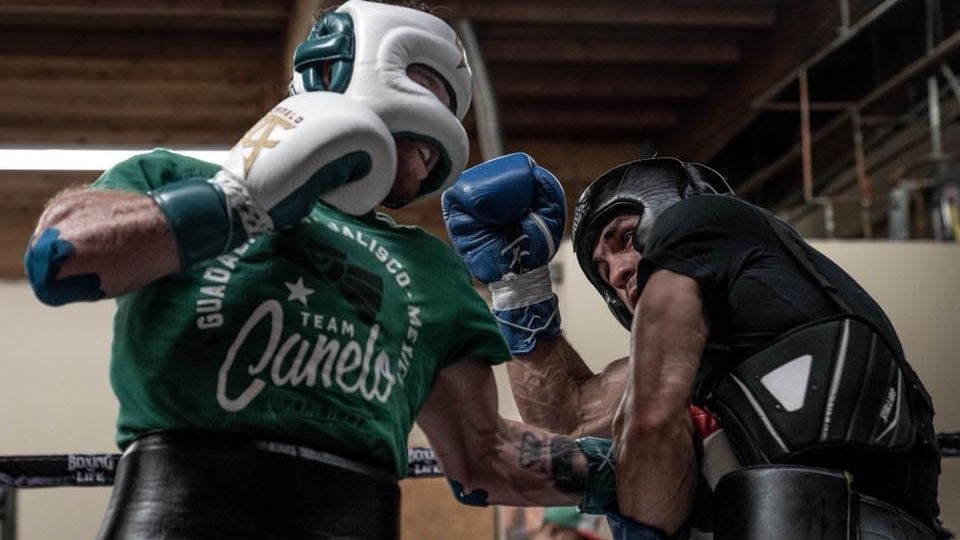
Even though there are unspoken rules in sparring, sparring partners should ideally still have a verbal agreement before every session about how hard to go.
Agreeing on a set intensity for a sparring session is important in keeping the action under control. It helps prevent things from getting heated, and from those sparring to lose their composure.
Prior to starting every round of sparring, talk with your sparring partner on how hard to go. Most fighters will agree to spar at a percentage of intensity. If you agree on 50% power and speed, then stick to it. You don’t want to be hitting harder than your sparring partner, and vice versa. Remember, sparring is about improving technique and strategy, not trying to knock each other out.
5) Go In There With A Plan
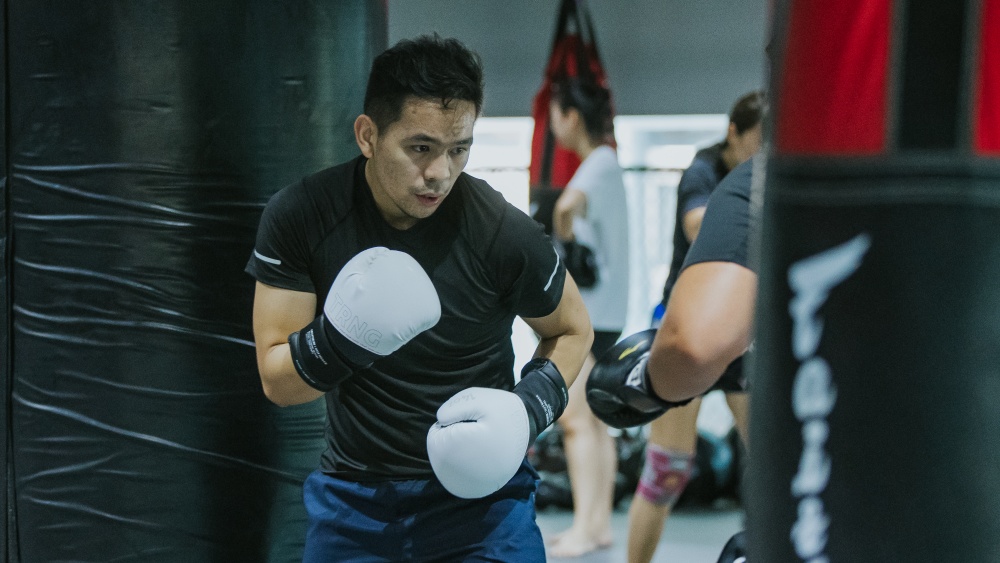
Sparring is just as much a tactical exercise as it is a physical one. You will want to go in the ring with a concrete plan of what you want to achieve. Before you step in the ring for sparring, make sure you have a game plan to follow. Adjust your sparring session to focus on honing specific skills.
For example, you may want to practice your combinations against a live opponent, so have your sparring partner only defend for a few rounds. Perhaps you want to train your counterpunching and timing, notify your sparring partner that this is your intention, and then proceed to execute. Maybe you want to practice clinching, so instruct your sparring partner to close the gap and fight on the inside.
By going into sparring with a plan, you’re not just blindly trying to pick a fight. Sparring, after all, is not a real fight, so don’t treat it like one.
6) Practice Different Techniques
Now is your chance to try out those moves you’ve been working on in the gym. There are only so many ways you can utilize the heavy bag, the double-ended bag, or the uppercut bag, for instance. You’ve worked hard to hone your techniques, now it’s time to put them to use.
If you’ve ever wondered how your right cross will hold up in a real fight situation, you can test it out in sparring by focusing specifically on that technique. Maybe you want to practice slipping punches and ducking under, sparring is the best way to tweak your techniques and make sure they are applicable in a real fight.
Don’t go into sparring sessions with the intention of winning. Sparring is a tool boxers use to sharpen their skills. Even if you make mistakes in there, the lessons you learn will prove invaluable in the long run.
Also, don’t be afraid to diversify the techniques you use in sparring. Remember, in this closed and controlled environment, you can take bigger, more calculated risks. So take advantage of that and spar wisely.
7) Focus On Your Defense
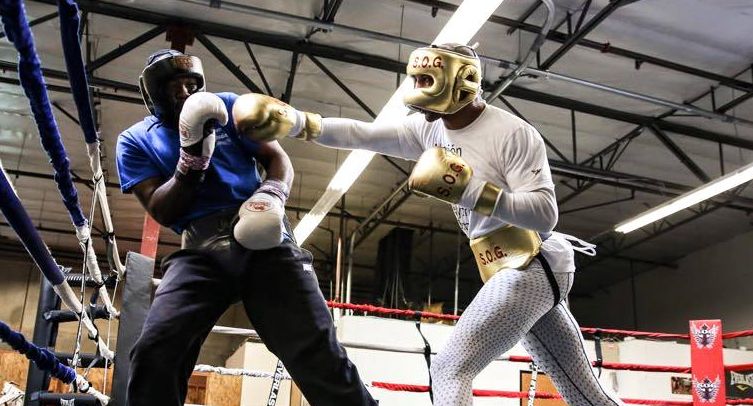
Offense isn’t the only thing you should focus on in sparring. Boxing defense is just as important, if not more important, than learning how to attack. Dedicate a set amount of time to hone your defensive skills.
There are three key elements to defense, namely blocking/parrying, head movement, and ring generalship. Take a few rounds to focus specifically on these aspects in every sparring session. Once you reach a level of comfortability, you can then add counter-attacking to your repertoire.
Like they say, offense may win the game, but defense wins championships. Solid defense is what separates amateurs from the pros. Having good defensive skills will also amplify your offensive skills, believe it or not.
Wild as it may seem, sparring is also a chance for you to experience what it feels like to get hit clean. Sparring sessions will very rarely go a hundred percent in terms of speed and power, as fighters will usually go at limited capacity. There is no better time and place for you to discover if you can take a punch or not than in sparring.
8) Be Mindful Of Your Habits
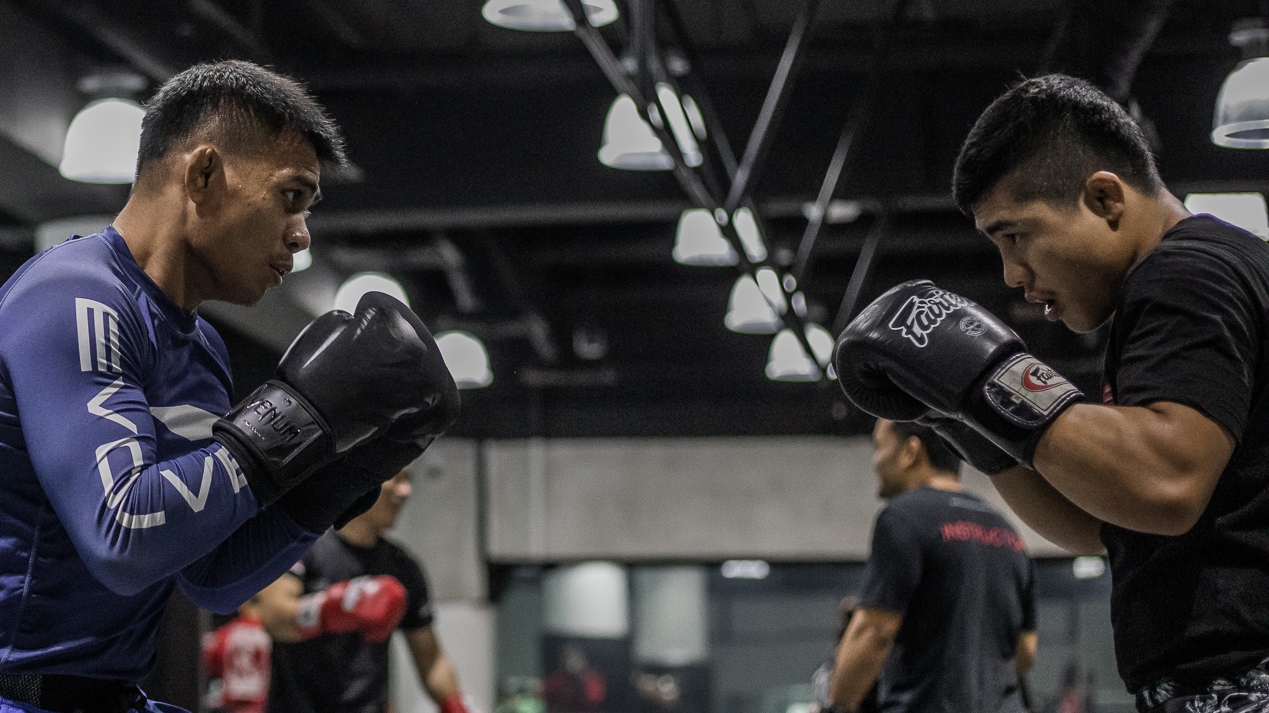
Once in the ring, be mindful of your habits. To get the most out of your sparring, your brain should be downloading all of the tactile information your body will pick up in each session.
Fights often come down to who can take advantage of certain openings. Good opponents will always try to decipher your habits and find openings to exploit. By being mindful of your habits, you can make tactical and technical adjustments on the fly. It’s a key skill in fighting.
Having complete mental awareness, calmness under pressure, and the ability to execute under duress, are all key skills you develop in sparring.
Furthermore, you will want to stick to your fundamentals. Pay attention to your footwork and ring generalship, your defense, and punching technique. If needed, you should drill your techniques over and over again to get them right. You can ask your sparring partner to attack or defend a certain way, so you can train for specific situations in the ring.
Remember, sparring is not fighting, but a tool to help the both of you practice your fighting techniques in real situations.
9) Enjoy The Process
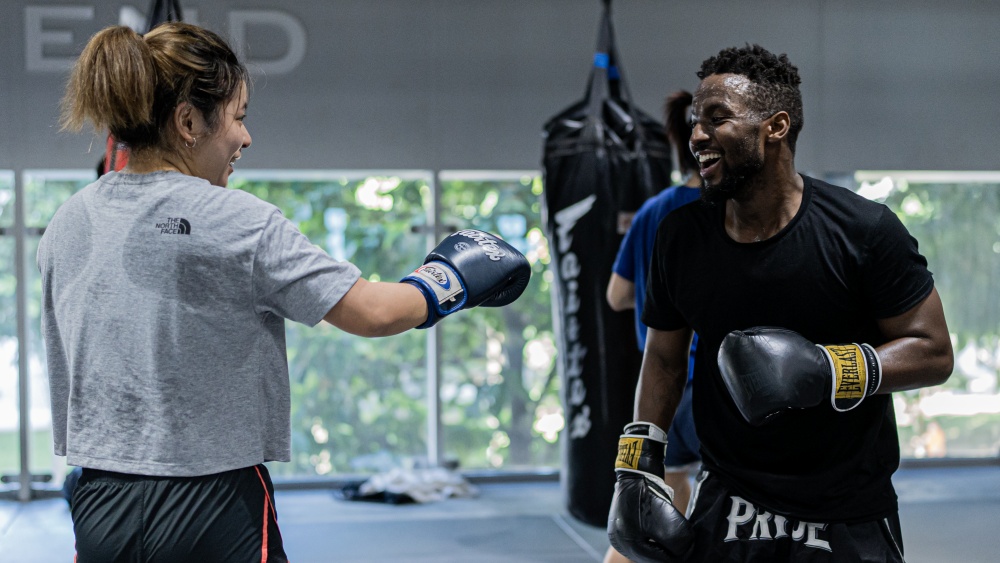
Of course, the most important of all is to enjoy the process. Sparring may be a daunting task in the beginning, but once you understand it for what it truly is, you will begin to experience the fun in it.
Over time, you will feel yourself getting better and better. You’ll get well accustomed to the pace of a real fight, and you’re going to want to increase the intensity. Sparring is addictive because it’s a lot of fun. Just enjoy the ride and take the next step in your journey gradually. Try your best to get the rounds in and don’t rush things.
Martial arts is a journey, not a destination.
10) Sparring Tips
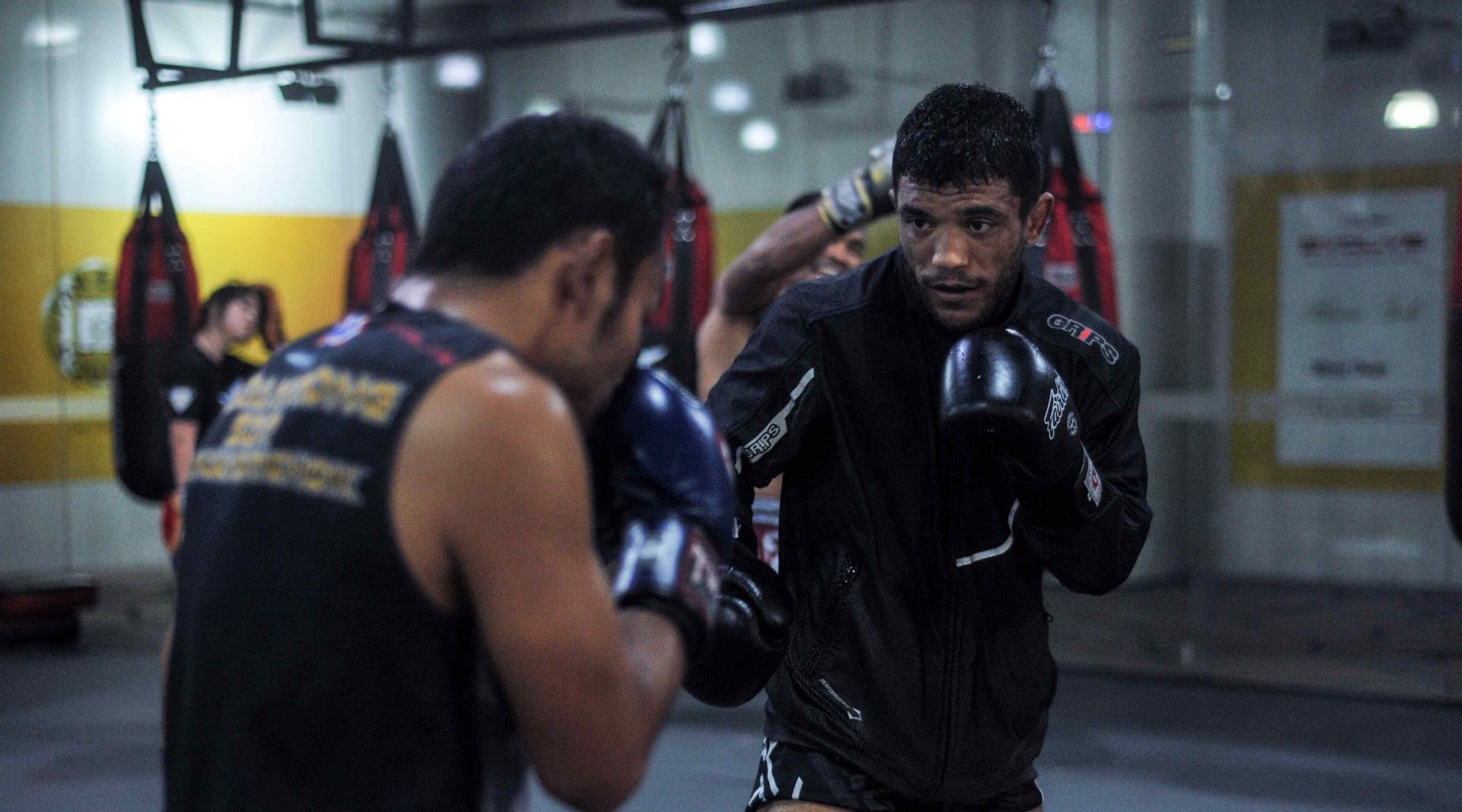
Lastly, here are a few random tips for your first sparring session.
Your instructors will give you the best advice. They’ve handled many students in their first sparring sessions, and they’ve experienced it themselves. So they know what you’re feeling and what you might be thinking. As such, they will most likely give you the best advice, tailored to your current skill level.
It can’t be stressed enough. The jab is the most important punch in boxing. It has applications in both offense and defense. Stick to the combinations you’ve learned so far and try to apply them. When you learn something new in training, practice it in your next sparring session.
- Keep your focus
Nothing will get you hit faster in there than a distracted mind. You can’t take your mind off sparring for even a second in the ring. You have to protect yourself at all times, keep your guard up, and move your head.
- Don’t forget to breathe
Improper breathing in the ring will gas you out and deplete your energy quickly. Always remember to inhale and exhale with the proper breathing techniques for fighting. It will feed oxygen into your muscles and keep you energized.
- Pay attention to defense
It’s not all offense in there. It’s very easy to fall into the trap of just going ham with your combinations, wanting to stay constantly on the attack. But a significant chunk of sparring should be focused on defensive techniques.
You may also like:
